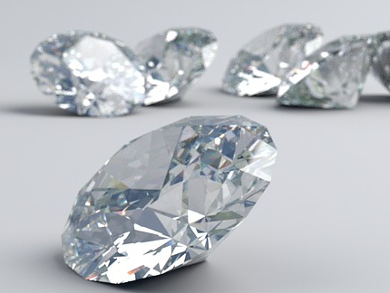Diamond nanoparticles (or nanodiamonds, NDs) have potential applications in medicine and life sciences, e.g., for sensing and imaging, for drug-delivery, or as a component in scaffold or coating materials. While diamond itself is biocompatible, NDs have different properties from the bulk material and could be cytotoxic.
Štěpán Potocký, Institute of Physics of the Czech Academy of Sciences, Prague, Czech Republic, and colleagues have studied the cytotoxicity of NDs prepared by different methods. NDs can be prepared, e.g., by the detonation method (DNDs) or by grinding high-pressure high-temperature diamonds (HPHT NDs). The team varied the type of NDs and their surface functionalization and monitored their influence on the viability of human osteoblast-like SAOS-2 cells. They also used live-cell imaging to observe the ND uptake in cells.
The researchers found that NDs with an oxygen-terminated surface, such as HPHT NDs, were the most biocompatible. DNDs, which are usually hydrogen-terminated, decreased cell viability. Imaging showed that this type of ND rapidly entered cells and caused them to rupture. If DNDs were oxidized by annealing at 450 °C, however, their toxicity was significantly reduced. The team attributes this to the aggregation of oxygen-terminated NDs into larger clusters, which causes a slower cell uptake.
- Uptake and intracellular accumulation of diamond nanoparticles – a metabolic and cytotoxic study,
Antonín Brož, Lucie Bačáková, Pavla Štenclová, Alexander Kromka, Štěpán Potocký,
Beilstein J. Nanotechnol. 2017, 8, 1649–1657.
DOI: 10.3762/bjnano.8.165




